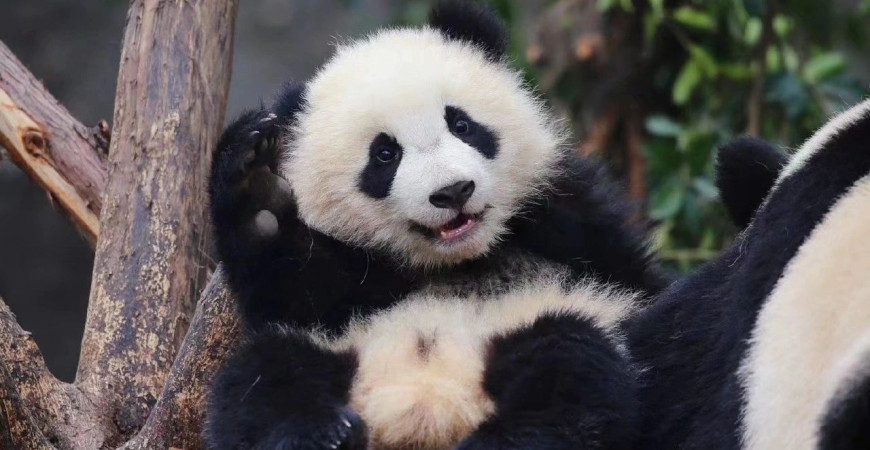Pandas Are Not 'Sexually Apathetic'! 3 Myths and 2 Truths About Pandas
Compared to other bear species, the shorter muzzle, broad cheeks, round cranium, distinctive black eye patches, and the waddling gait of the giant panda (Ailuropoda melanoleuca) evoke infantile features. These baby-like characteristics instinctively trigger our protective instincts, making it hard for anyone to resist the cuteness of pandas.

Panda Cub
Pandas are adorable, but cuteness alone isn't reason enough to allocate substantial financial and physical resources to protect a species. Are pandas destined for extinction? Are we wasting resources by conserving this species? To address these questions, we must first dispel three myths.
Myth 1: Pandas have reached an evolutionary dead end
Many argue that giant pandas should naturally be carnivores, yet they exclusively consume vegetation, specifically the least nutritious and hardest-to-digest bamboo. Essentially, bamboo is comprised of woody grasses (monocotyledonous flowering plants), with over 90% of its dry weight consisting of lignin, cellulose, and hemicellulose. Cellulose and hemicellulose account for up to 65%. Additionally, it contains a significant amount of silicon, making it tough, rigid, and nutritionally poor—akin to consuming dried sugarcane residue.
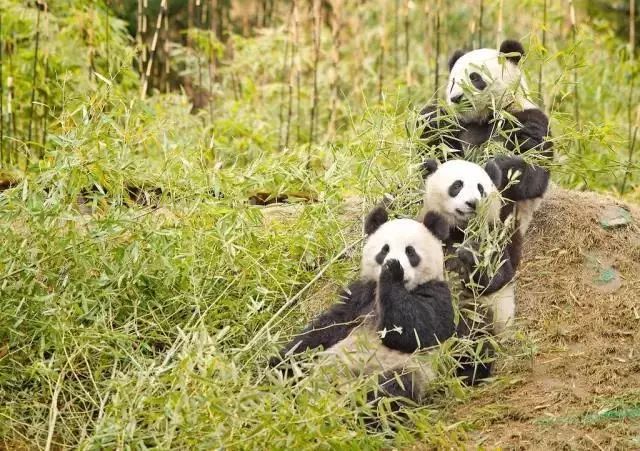
The main food of pandas appears remarkably unappetizing.
Despite bamboo's unappealing taste upon consumption, its widespread distribution and vast quantity, along with its avoidance by other animals, provide a refuge for pandas. It allows them to evade larger predators like saber-toothed tigers by hiding within bamboo forests. Moreover, research indicates that due to a genetic mutation (Tas1r1 pseudogenization) around 4.2 million years ago, pandas lost their ability to taste umami, rendering meat unappealing to them. However, determining whether the lack of meat preference preceded bamboo consumption or vice versa presents a challenge without a definitive answer. While we can speculate about why pandas eat bamboo, it's difficult to disprove. Yet, regardless of the hypothesis, this significant dietary shift has largely reduced direct competition with other species, making it a prudent evolutionary move.
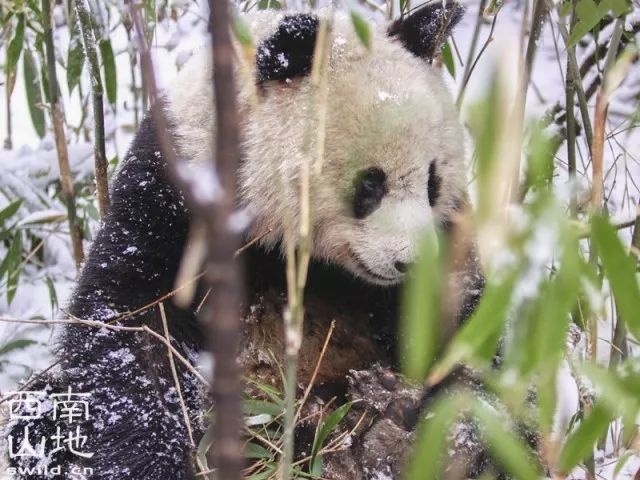
The Qinling Mountains: a panda munching on bamboo.
Although the giant panda has shifted its diet towards bamboo, its digestive system retains characteristics of a carnivore: short food retention and digestion times, lacking enzymes to break down cellulose and lignin. However, the panda isn't a melancholic fatty; it relies on sheer determination, evolving numerous remarkable adaptations. Since the food lacks nutritional value and is challenging to digest and absorb, the panda's strategy is to continuously and efficiently consume, conserving energy whenever possible.
Weapon 1: Pseudo-Thumb and Strong Dental Structure
The panda's wrist bone has specialized into a sixth digit, the 'pseudo-thumb.' This adaptation grants the panda a unique opposable gripping ability not found in other bear species. It allows for better grasping and more delicate manipulation, facilitating the swift and agile consumption of bamboo. This grasping ability is rare, seen only in koalas, North American opossums (in their toes), and most primates, in addition to the giant and red pandas, all of whom consume bamboo. Among these, only the giant and red pandas have evolved a 'sixth finger' to complement the other five. Despite not sharing close genetic ties, both giant and red pandas independently developed the same feature to adapt to bamboo consumption, a phenomenon known as 'convergent evolution.

The pseudo-thumb is the fleshy pad near the panda's right eye. This 'thumb' lacks a claw. There's no sixth digit on the panda's hind paw. If you get a chance to see a panda's front paw print, it'll have six toe pads but only five claw marks.
The panda's bite force, ranking just below that of polar bears and brown bears among various bear species, is backed by robust jaw muscles and a heavy, thick skull, explaining its powerful bite (there's a reason for that large face). Eating bamboo is akin to crunching a cucumber, cleanly and precisely snapping through it without any mess. These distinctively neat bite marks serve as one of the identifying features of pandas in the wild. Therefore, refrain from casually touching pandas; beware, they might just grab your hand and take a nibble...
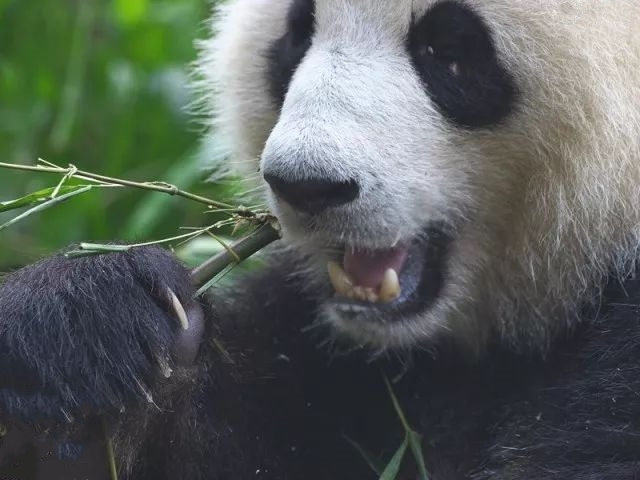
The pseudo-thumb enables pandas to perform a gripping motion. While we're at it, let's take a peek at how impressive their dental structure is.
Weapon 2: Specialized Digestive Tract
Pandas also increase the number and length of villi in their intestines, enlarging the surface area for nutrient absorption. Simultaneously, their intestines produce more mucus to protect against the high silica content in bamboo, preventing potential damage. This mucus also coats the feces, aiding in smooth excretion. Among these villi are some epithelial cells that allow researchers to extract DNA from panda feces—leveraging this DNA information, we can undertake individual panda identification-related work.
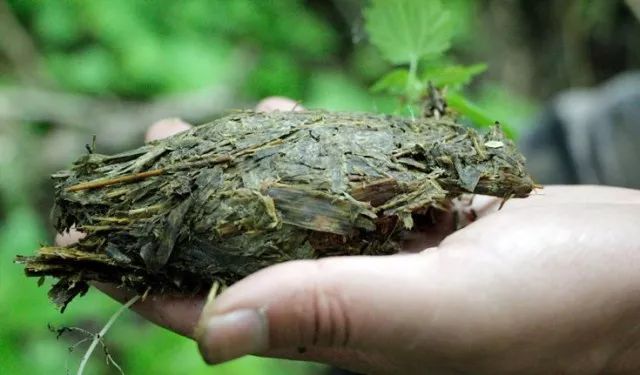
Panda poop—where researchers extract panda DNA. The color variation depends on whether they've been munching on bamboo leaves or stems.
Weapon 3: Patience and Intelligence
Pandas not only eat efficiently but also exhibit remarkable patience. Wild pandas spend over half their day (10 to 14 hours) feeding, dedicating the remaining time mostly to sleep. Their daily intake ranges from 12 to 40 kilograms, depending on the bamboo part consumed, comprising around 20 to 40% of their body weight. However, due to the low nutritional and moisture content in bamboo, most of it is excreted. Whether eating or sleeping, pandas cannot resist the call of nature. In areas where pandas roam, their feces make a notable presence—shaped like sticks, with identifiable bamboo fragments, lacking any odor; when placed in alcohol, it resembles green tea.
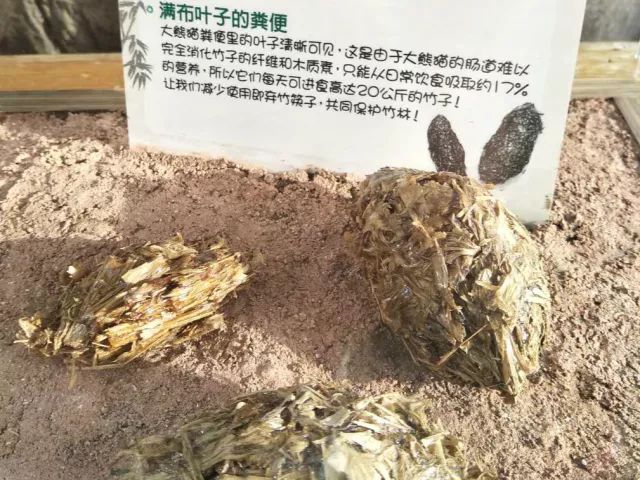
Panda poop remains a fantastic educational tool in zoos.
Pandas exhibit cunning intelligence in their bamboo diet strategy. Bamboo shoots, being the most nutritious, prompt pandas to track their emergence from early spring, feeding from lower to higher elevations. In summer, they focus on the most nutritious bamboo leaves, while in winter, they switch to tougher bamboo culms. As a result, pandas can range from lower altitudes up to around 3,500 meters, utilizing seasonal vertical migration to meet their nutritional needs.
Hence, pandas are far from being an evolutionary failure; they are rather enigmatic winners
Myth 2: Pandas are 'sexually apathetic' and face difficulties in reproduction
Beyond migration patterns, the giant panda's breeding season aligns with the growth rhythm of bamboo. The months of March to May, a time of amorous fervor, mark the mating season for pandas. Despite the female's brief two to three-day estrus and the male's short reproductive organ, wild pandas exhibit robust sexual desire and reproductive success. Females can mate with multiple males within this brief estrus period, while males roam in search of receptive females, competing to mate successfully.
Pandas reach sexual maturity at 4 to 5 years old, and unless involved in caring for cubs, all individuals participate in breeding, with little chance to intervene. Once mating concludes, they return to their solitary lives, showing no interference or cooperation, let alone raising the next generation together. This open mating approach, involving multiple males and females, is far from 'sexually apathetic.

Pandas breed once every two to three years, producing 1 to 2 cubs per litter. They opt to nurture the stronger offspring, resulting in a survival rate as high as 60 to 90%. Such reproductive rates are quite commendable among higher-order animals. Claims suggesting pandas are incapable of reproduction are merely misled by news from captive conditions.
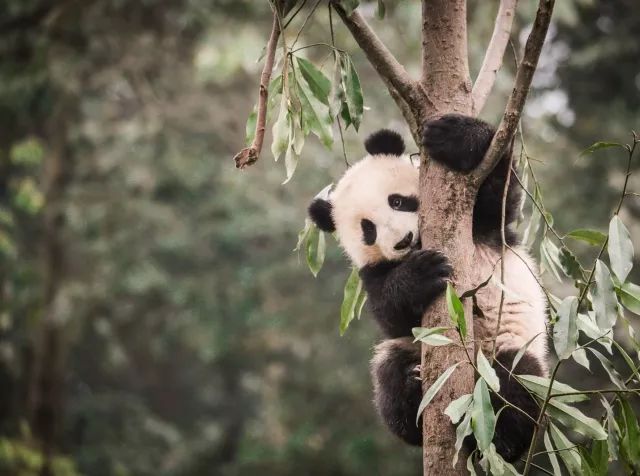
Pandas enjoy climbing trees and resting while hugging tree trunks. Panda cubs tend to spend extended periods up in trees to evade predators.
Pandas' gestation period spans nearly half a year from mating, but their fertilized eggs remain in a dormant state, floating within the uterus until specific conditions are met for them to attach to the uterine wall and begin development. This phenomenon is known as delayed implantation in bears. For pandas, the intrauterine developmental period is less than two months, resulting in newborn cubs weighing only about one-third the size of a soda can. Some researchers suspect that the conditions for egg implantation involve the mother's transition from consuming bamboo shoots to consuming calcium-rich bamboo leaves.
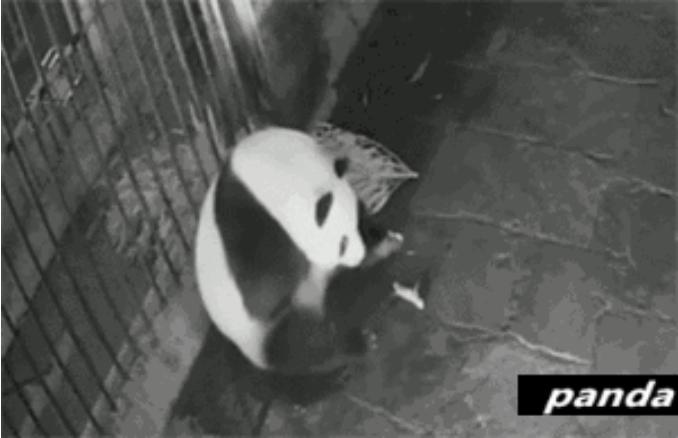
Sudden birth. Pay attention to the cub's size.
The newborn cub clings to its mother for milk, akin to a shadow, until around nine months when it starts eating bamboo. This coincides with the arrival of fresh, protein-rich bamboo shoots in the blossoming months of April and May. Such a reproductive cycle perfectly times the new generation to catch the best season. Those who have thrived until now are undoubtedly those who fully leverage the food growth cycle.
Myth 3: Pandas starve when bamboo blooms.
Bamboo indeed undergoes periodic mass flowering, followed by widespread die-offs. However, in habitats where pandas reside, there are nearly 40 species of bamboo available for them to consume, each with a different flowering cycle. If one species of bamboo blooms, pandas migrate to other areas in search of different bamboo species to eat.

The bamboo available for pandas to eat comes in many varieties, such as Phyllostachys glauca (left) and Pseudosasa japonica (right).
Pandas are highly nearsighted, but in dense bamboo forests, even with excellent vision, it's of little use; you could be a few meters away, and they wouldn't see you. However, pandas boast an exceptional sense of smell. Before you see them, they can sniff out that you're not of their kind. Their initial reaction would be to avoid and silently move away. They also use scent marking to demarcate territories and communicate mating signals. With a lifted tail, they mark tree trunks by mixing secretions from their anal glands with urine.
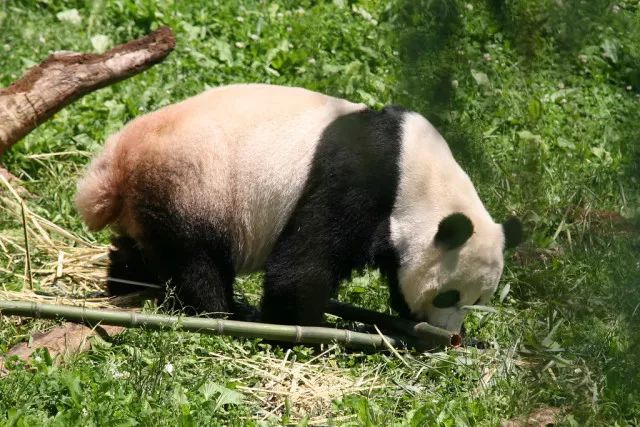
Take a closer look at the tail! Though less than 20 centimeters, it's still the longest among bears, except for sloth bears. No matter how dirty it gets, it remains white, not black.
Truth 1: The threat to pandas lies in the loss of their habitat.
Tasty and edible bamboo thrives under the shelter of forests. Without tree cover, bamboo tends to grow excessively dense and robust. Furthermore, undisturbed forests often harbor large trees that can provide pandas with birthing dens. This is why a good forest habitat is crucial for pandas.

The panda habitat in the Wanglang National Nature Reserve, thriving bamboo forests beneath spruce and fir trees.
Under the vast sky, towering trees stand tall, while beneath them thrive lush green bamboo groves. Hanging mosses and dense carpets of mosses adorn branches, and gentle streams flow down the slopes. This is the paradise of the panda. In this tranquil haven, pandas, by their unique choices, could have lived in peace indefinitely, never lacking in sustenance.
However, the sounds of forest felling echo, roads cut through the woods, and bulldozers remove their shelter, leaving the imprints of urbanization. Infrastructure for hydroelectricity, mining, farmlands, grazing, and even commercial tourism development, along with uncontrolled human activities and traffic, are gradually encroaching upon the pandas' wild habitats, fragmenting them, and 'divide and conquer' seems to be the approach. Take Wanglang National Nature Reserve, for instance; over one-third of the panda habitat has degraded or vanished due to grazing alone. Habitat loss and fragmentation, compounded by rapid climate change, pose a real threat to pandas.

In the panda habitat of Pingwu, Sichuan, bamboo stands withered from grazing by cattle and horses.
Despite a modest increase in panda numbers over the past decade, they have been fragmented into 33 isolated populations. Among these, 18 populations consist of fewer than 10 individuals, facing a high risk of localized extinction. These populations are isolated from others by natural or human-made barriers, hindering individual and genetic exchange. If one area experiences bamboo flowering and subsequent die-offs, another suitable bamboo forest may exist nearby, but without ecological corridors connecting these areas, pandas cannot traverse. Similarly, if a disease strikes, the similarity within local populations makes it challenging for individuals to possess disease-resistant genes, leading to the potential collapse of an entire localized population. In the face of rapidly changing climates altering the growth patterns and ranges of bamboo, will the giant pandas be able to migrate and adapt in time? Is their future optimistic?
Truth 2: Protecting pandas preserves more than just pandas.
As the sole country hosting wild giant pandas, China's conservation efforts should extend beyond expanding captive populations. A more viable approach involves investing resources in preserving their natural habitats. This form of protection not only safeguards pandas but also serves as a lifeline for the survival of numerous other species.

Thanks to the establishment of panda conservation areas, these regions retain pristine, untouched forests. Pictured here is the Wanglang National Nature Reserve in Sichuan, China
The regions where pandas inhabit happen to be the most densely populated areas for China's endemic species. About 96% of the panda habitats are hotspots for China's endemic species (species exclusively found in China and nowhere else). In these panda habitats, there are over 8,000 species of flora and fauna, covering 70% of China's forest-dwelling endemic mammals, 70% of endemic bird species, and 30% of endemic amphibians. Protecting any of the forests favored by pandas shelters numerous unknown, unique, and potentially endangered species.

Nearly one-third of the national hotspots for mammal, bird, and amphibian species overlap with panda habitats.
For these species, you might find it challenging to perceive them as adorable or feel inclined to donate towards their cause. You might struggle to be aware of their existence, let alone remember their names and their disappearance might go unnoticed. However, a healthy ecosystem, a thriving forest, is indicated by these species and the known or unknown intricate relationships among them.
Perhaps, by sheer luck, in the mountainous regions of Southwest China—a biodiversity hotspot crucial on a global scale, there exists a star species that captivates the attention of people worldwide—the panda. This attention renders this area relatively fortunate compared to other regions in China. The panda acts as a large umbrella, safeguarding the multitude of creatures coexisting in this same habitat.

